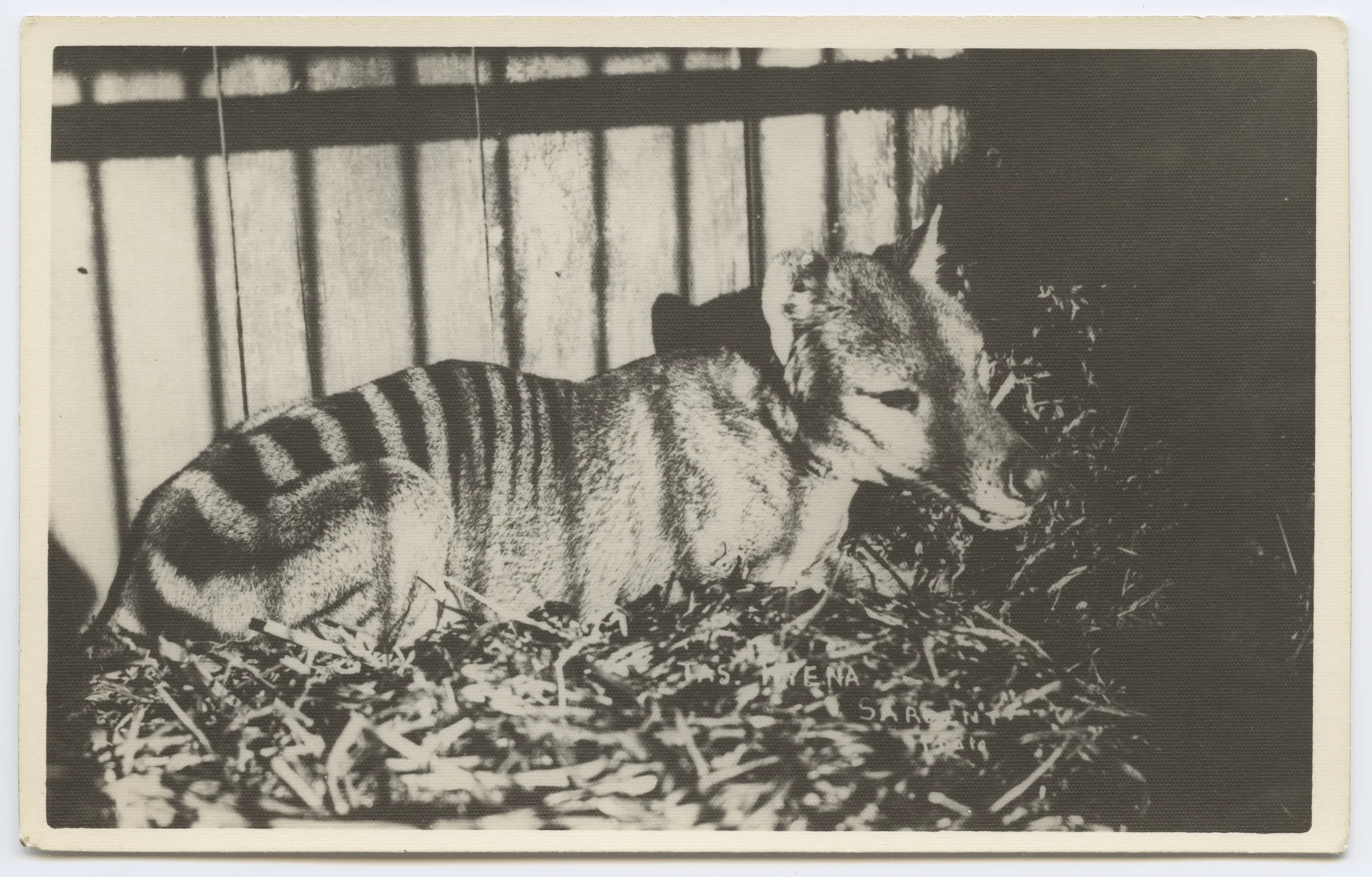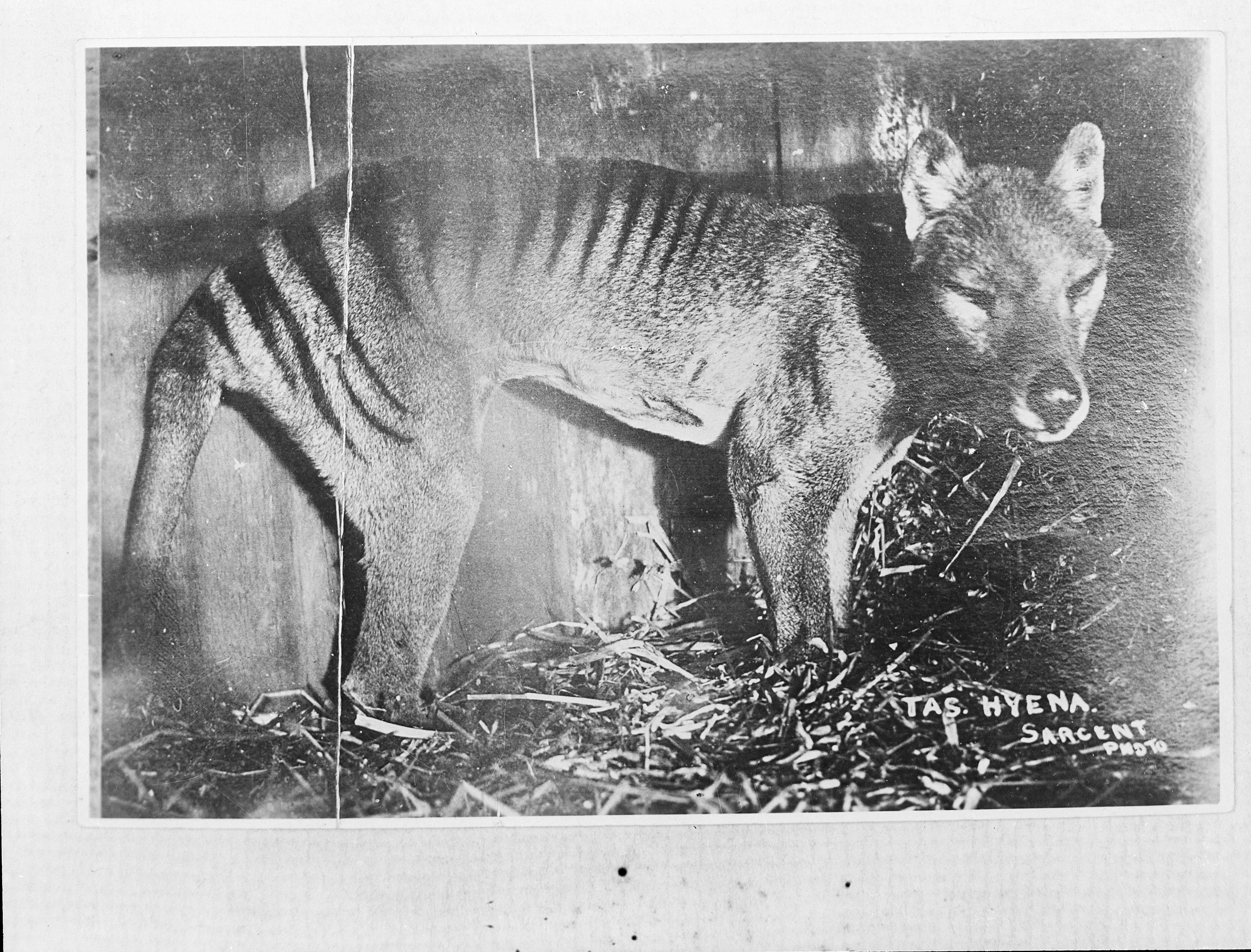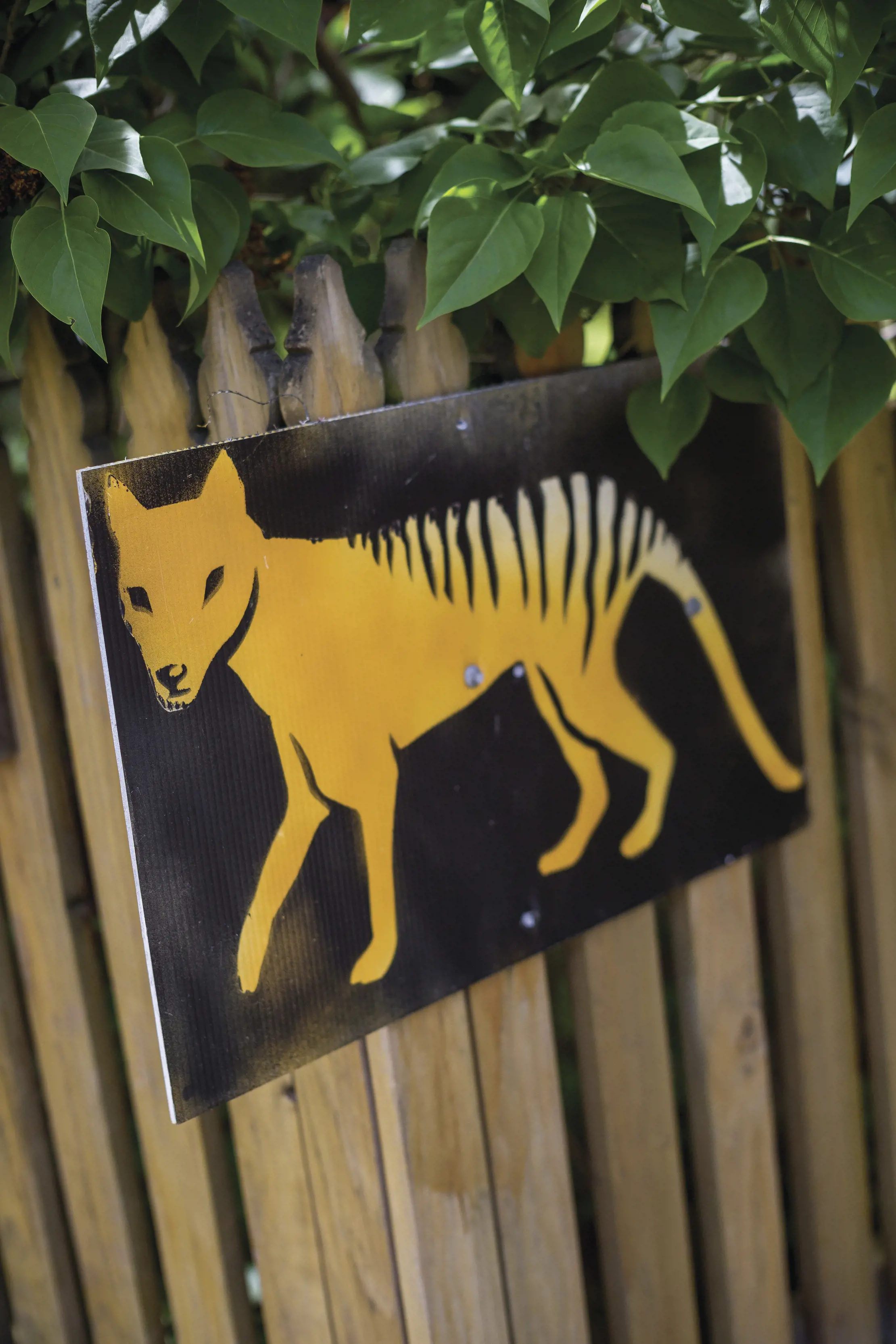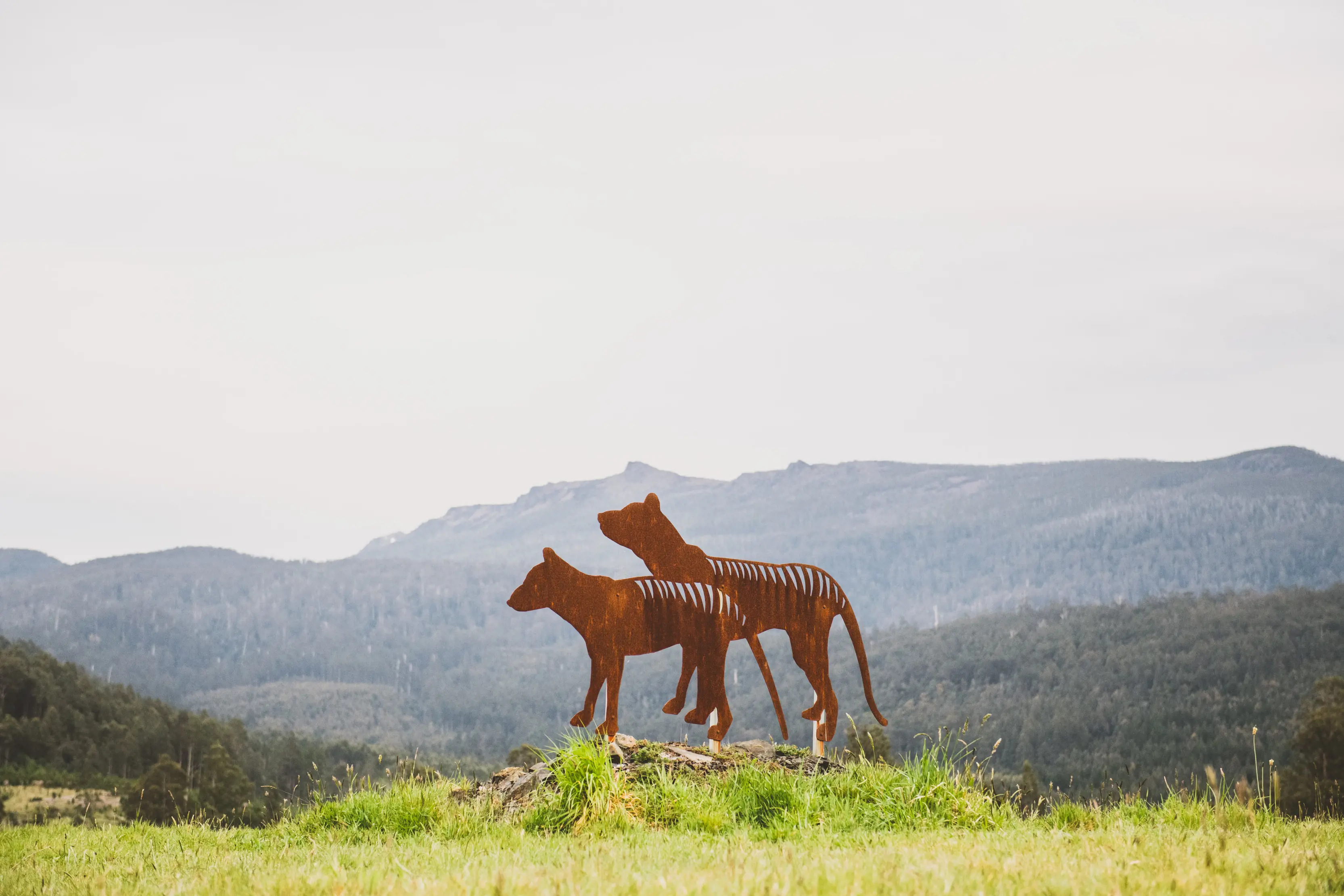
When Europeans arrived in Tasmania in the early 19th century, there were an estimated 5000 Tasmanian tigers roaming the island.
These curious striped animals, also known as thylacines, had once roamed across Australia and Papua New Guinea – they can be seen in Aboriginal rock art in Kakadu and on Western Australia’s Burrup Peninsula – though by 2000 years ago they were extinct everywhere but Tasmania.
On this island, however, the animal had a secure place.
At least until European settlers arrived.


Hunter or hunted?
Early European farmers blamed stock losses on Tasmanian tigers, even if the evidence often pointed elsewhere. Such a wild-looking, dog-like creature was an easy scapegoat, though recent research has suggested that a thylacine might have been incapable of taking down a sheep.
“The thylacine was given a whole bunch of names after Europeans arrived,” says Tasmanian Museum and Art Gallery (TMAG) zoology curator David Hocking. “They were called Tasmanian wolves and Tasmanian tigers, and a lot of that was to paint a picture of a fearful animal that was a threat to people and sheep.”
The thylacine is a creature that continues to capture imaginations. In Tasmania, you’ll see its likeness on car licence plates, beer labels, fluffy toys – even a cricket-team name.
As large as a medium-sized dog, it was the world’s largest carnivorous marsupial (a title now held by the Tasmanian devil), making it more closely related to quolls and Tasmanian devils than dogs. With sandy brown fur, and dark brown stripes across its back and rump, it carried its young in a pouch like a kangaroo, and fed largely on wallabies as well as small animals and birds.
A shy animal, it was mute most of the time. When excited or anxious it made a series of husky, coughing barks; when hunting, it gave a distinctive terrier-like, double yap, repeated every few seconds. The first sighting of a thylacine wasn’t recorded until two years after Tasmania was settled by Europeans and there are no recordings of its barks, though some locals claim to have heard the sounds of the Tasmanian tiger hunting at night.


A tiger bounty
In 1888, as farmers continued to complain of stock losses, a bounty was placed on the Tasmanian tiger.
“There was a lot of lobbying of the government by a group called the Buckland and Spring Bay Tiger and Eagle Extermination Society, and they put up a petition to the government saying they couldn’t farm because of the thylacines,” says Kathryn Medlock, TMAG’s honorary curator of vertebrate zoology.
“The bill only passed parliament by one vote in the end, and some people were opposed to it.”
The Tasmanian government paid £1 for every adult thylacine killed, and 10 shillings for each pup. During the next 21 years, until the bounty was lifted in 1909, about 2180 tigers were killed for the reward. The population was decimated.
In the 1930s, the last wild thylacine was captured in the Florentine Valley by Elias Churchill and sent to Hobart’s Beaumaris Zoo. Churchill’s hut, where the tiger was kept when Churchill first captured it, remained near Adamsfield until it was destroyed in a bushfire in 2019. The zoo named the tiger Benjamin.
By 1936, realisation of the thylacine’s plight gripped the community. In July of that year, the Tasmanian government declared the thylacine a protected species. Two months later, Benjamin died. He was the last known Tasmanian tiger alive. The date of Benjamin’s death – 7 September – was adopted as National Threatened Species Day.
Reported thylacine sightings continue to this day, though no proof exists of their survival, and they were declared extinct in 1986.

Mole Creek Hotel and Tassie Tiger Bar

Museum pieces
There are a couple of ways to see Tasmanian tiger artefacts while in Tasmania.
The Tasmanian Tiger: Precious Little Remains exhibition at the Queen Victoria Museum and Art Gallery (QVMAG) in Launceston has thylacine remains, historical photos and a rug made from thylacine skins that was used to keep passengers warm in a carriage. The “buggy rug” is the only known rug made from multiple thylacine skins.
The Thylacine: Skinned, Stuffed, Pickled and Persecuted exhibition at the Tasmanian Museum and Art Gallery (TMAG) in Hobart features four taxidermy thylacines, seven skins, a skeleton, a collection of pouched young preserved in alcohol, and video footage of thylacines in zoos
“It is sad, that footage,” says Medlock. “It’s really sad.”
TMAG’s collection also features a set of thylacine footprints.
“The last thylacine died in captivity in 1936, but we have four footprint casts that were collected at the Jane River in 1938, after the last one we really know of died,” says Hocking.
“It’s tricky to know for certain that they are thylacine prints because thylacines, devils and wombats can have similar footprints in different circumstances, but we’ve got some pretty good reasons to think they could well be evidence of some of the last thylacines that were definitely alive in the wild.”
TMAG’s display is one of the biggest and best thylacine collections in the world, and it’s now also being used by science to help build the full story of the Tasmanian tiger.
“A lot of current research has been going through museum collections, looking at specimens in alcohol, which preserves all the soft-tissue anatomy and all the muscles, and looking at the shape of the bones in the skeleton and comparing them to other modern species to infer or predict the ecology of the animal when it was alive,” says Hocking.
“It’s quite amazing that this is a species that was alive alongside us not that long ago, but we’re having to use the same tools and technologies that we use to predict the ecology of dinosaurs to work out how it lived and behaved.”
